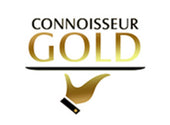Edible Gold Across the World - Barbados
- by sam@wrightsoflymm.co.uk User
Gold and Silver in Caribbean Gastronomy
In the luxurious world of gastronomy, nothing draws attention quite like edible gold leaf or silver leaf. In Barbados, a culinary crossroads of African, European, and Caribbean influences, the use of precious metal adornments—gold flakes, gold dust, silver flakes, silver dust—has slowly found its niche in upscale dining, special celebrations, and high-end confectionery. Although the use of edible gold and silver is not deeply rooted in traditional Bajan foodways, global luxury trends have filtered into Barbados, enabling chefs, patisseries, and mixologists to experiment with 24 carat or 23 carat metal decoration in food and drink.
In this article, we'll trace the history (global and local) of edible precious metals, examine how they are used in Barbados today, and consider practical and regulatory issues surrounding them.
The Broader History of Edible Gold and Silver
Ancient Origins and Symbolism
The use of gold as ceremonial or medicinal ingestion dates back thousands of years. Ancient Egyptians used gold in religious feasts and believed it to have spiritual and purifying qualities. In Asia—particularly in China, India, and Japan—gold and silver leaf have been used to adorn sweets, drinks, and desserts as symbols of prosperity and divine favour.
By the Middle Ages and Renaissance, European nobility embraced edible gold as a conspicuous display of wealth. Banquets featured bread, oysters, fish, and meats gilded with fine gold leaf or gold dust. In some locales, limits were even imposed on how many gilded courses a feast could include. Meanwhile, alchemists and early medicinal practitioners attributed rejuvenating, healing, or purifying powers to ingesting gold.
Eventually, the practice became more decorative than medicinal. Chefs in modern haute cuisine revived edible gold (and occasionally silver flakes and dust) as a visual flourish—on desserts, chocolates, coupe glasses, and even savoury dishes.
Technical Standards: 23 Carat, 24 Carat, Purity, and Safety
In food applications, the purity of the metal is critical. Edible gold is typically 23 carat or 24 carat (i.e. extremely high purity) to avoid contamination by harmful metals. Because gold is biologically inert, it passes through the digestive system without absorption, so it is considered safe when produced to food-grade standards. Regulatory frameworks in the EU and U.S. permit gold as a food additive (E175) for decoration of confectionery exteriors, chocolates, and liqueurs (in limited amounts). Silver leaf is also used in some traditions, but silver may have stricter regulations depending on jurisdiction (due to possible toxicity in lower purity forms).
Gold in food typically comes in three main physical forms: gold leaf (thin sheets), gold flakes (pre-cut small pieces), and gold dust (ultrafine powder or lustre dust). Similarly, silver equivalents are silver leaf, silver flakes, and silver dust.
Edible Gold & Silver in Barbados: Emergence and Local Adaptation
Luxury, Tourism, and the Import of Gilded Trends
Barbados, with its reputation as a premier Caribbean tourist destination, attracts clientele who expect luxury and spectacle. High-end resorts, patisseries, wedding caterers, and cocktail bars sometimes import edible gold leaf, gold flakes, or gold dust to add that wow factor. Because local tradition does not include gilded food, this is relatively new—and largely limited to luxury contexts (weddings, VIP dinners, high-end dessert shops).
Chefs on the island increasingly adopt international plating techniques, plating cakes with a sheet of 24 carat gold leaf or sprinkling gold dust on chocolate truffles, and occasionally using silver leaf as accent. Though specific documented cases in Barbados are harder to find in public literature, the trend follows regional patterns in luxury cuisine in the Caribbean.
Use in Barbados: Desserts, Confections, Cocktails
Here are the main use cases for edible gold and silver in Barbados:
-
Luxury cakes and wedding confections: Grooms and brides may incorporate gold leaf accents (thin sheets) on their wedding cakes or sugar sculptures to elevate visual appeal.
-
High-end chocolates and pralines: Chocolatiers might dust gold dust or silver dust over bonbons, or press a flake or leaf into a filled chocolate.
-
Dessert plating: A scoop of ice cream, a panna cotta, or a tropical fruit carpaccio might receive a shimmer of gold flakes or silver flakes.
-
Cocktails and drinks: Bars may suspend tiny gold flakes in a champagne or clear cocktail, or rim glass edges with edible gold or silver lustre dust.
-
Branding and events: At gala dinners, luxury brand events, anniversaries, edible metal elements may be used in desserts or petit fours for branding purposes.
-
Promotional novelty items: Some bakeries or patisseries may offer novelty “gold-topped” macarons or petit cakes decorated with 24 carat leaf or 23 carat touches to appeal to upscale clients.
Thus, the usage tends to be decorative, symbolic, and aesthetic rather than functional or nutritional.
Challenges, Practicalities, and Regulation in Barbados
Cost and sourcing
Edible gold and silver materials are expensive—particularly 23 carat or 24 carat gold leaf or dust. Importing small quantities to Barbados involves shipping costs and ensuring food-grade certification. The expense often limits use to small accents rather than heavy coverage.
Handling and application
Working with gold leaf is delicate: sheets are extremely thin and fragile, easily torn or distorted by air currents or oils. Chefs must use special tools—soft brushes, non-metal tweezers, or gloved fingers—and work in controlled conditions. For gold dust and silver dust, care is required to dust evenly and avoid clumping. The aesthetic payoff must justify the effort.
Food safety and regulation
While many countries permit edible gold under stringent food-safety rules, Barbados must align with local food regulation standards (such as those of the Barbados Bureau of Standards or Ministry of Health). Producers and importers must ensure the edible precious metals are certified food-grade (i.e. no toxic impurities). Because silver in lower purity can be harmful, silver leaf is less commonly used or may be more regulated. Also, people allergic or sensitive to metals may have concerns, though edible gold is inert and generally safe in pure form.
Consumer perception and waste
Because edible gold or silver offers no flavour or nutritional value (being inert), its value rests purely in aesthetics and luxury. Some consumers may see it as wasteful or gimmicky. That said, in Barbados’s luxury, tourism, and event sectors, the visual impact can justify the cost for clients seeking premium experiences.






